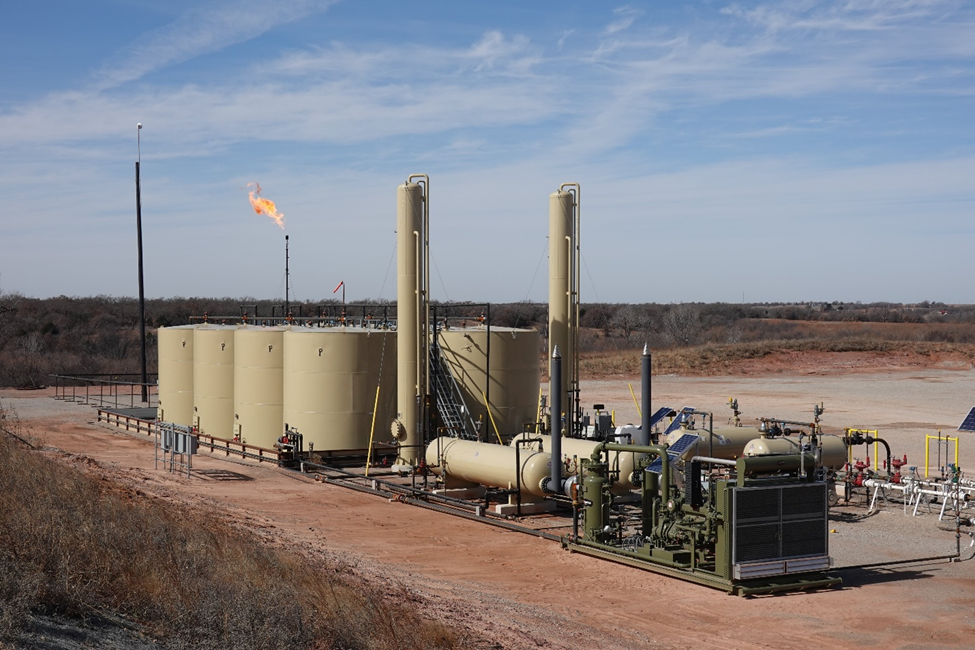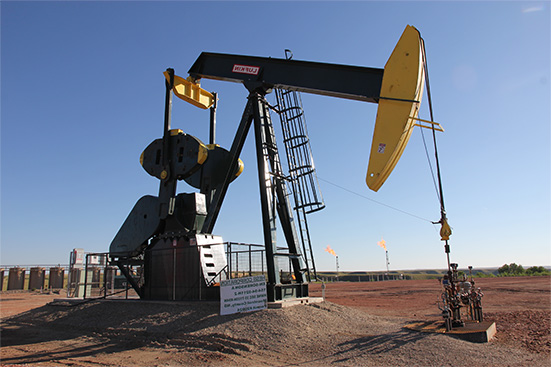
Market dips can be unsettling, especially if you’re involved in oil and gas investment. But if history has taught us anything, it’s that downturns don’t last forever. The sharp global downturn in 2020 is a clear example: despite the challenges, the industry rebounded with strength and resilience. For investors, today’s pullback echoes past cycles, and that familiarity can be a positive indicator of the opportunities that may follow.
A Familiar Pattern, Different Circumstances
In early 2020, the oil market faced an unusual combination of challenges – reduced demand, a price war, and global shutdowns. During this time, West Texas Intermediate (WTI) futures dipped below zero for the first time, reflecting the unique conditions the industry faced.
Yet, just over a year later, oil prices had rebounded, with Brent crude averaging $71 per barrel for the year, fueled by a rebound in global demand and renewed economic activity – a strong reminder of the industry’s resilience.
The resurgence in oil prices led to a revival in investment and exploration activities, particularly in key U.S. shale regions like the Permian Basin. U.S. crude oil production, which had declined in 2020, began to recover, averaging 11.2 million barrels per day in 2021.
Today, the market is experiencing another slowdown. Prices have eased from recent highs, inflation remains a concern, and global conditions are still adjusting. However, compared to 2020, the current environment is more stable in many ways and presents a few key differences that could benefit investors.
Contact DW Energy
Want to learn more about oil & gas investing? Our expert team can provide you with more information or schedule a consultation to talk about diversifying your investment portfolio.

What Makes This Downturn Different
- No sudden demand shock – Unlike 2020, when demand plummeted due to global lockdowns, oil consumption in 2025 remains on a growth trajectory. The International Energy Agency (IEA) forecasts global oil demand to increase by approximately 730,000 barrels per day (bpd) in 2025, with significant contributions from non-OECD countries, particularly in Asia.
- More disciplined supply – U.S. producers and OPEC+ have kept production in check, supporting price stability. OPEC+ plans to increase output by 200,000 bpd in 2025, reaching 42.9 million bpd, while U.S. producers are signaling potential declines in output due to reduced drilling activity and falling oil prices. This is a shift from past cycles, where oversupply made recoveries more volatile.
- Healthy balance sheets – Many energy companies took advantage of the 2021–2022 boom to strengthen their financial position. By reducing debt and improving cash flow, they’re now better equipped to handle short-term market fluctuations with greater stability. For instance, Diamondback Energy cut its capital expenditures by $400 million and is prioritizing debt repayment and share repurchases, a clear sign of its focus on long-term stability and readiness to navigate market shifts.
Investment Markets Then and Now
In 2020, capital dried up across the sector. Many investors pulled back, and energy stocks were among the worst performers in the S&P 500. But those who stayed in the game saw significant returns once prices rebounded.
Between late 2020 and the end of 2022, the S&P 500 Energy Index more than doubled in value, driven by the rebound in oil prices and investor interest.
Today’s market is more cautious but still active. Private capital continues to support development projects, especially in low-cost, high-return basins like the Permian. Many investors now see oil and gas as a hedge against inflation, geopolitical instability, and supply chain disruption.
What This Means for Qualified Investors
If history is any indication, short-term price pressure doesn’t signal long-term weakness. What may look like a slowdown today can set the stage for strong growth ahead. In many cases, it creates the conditions for future opportunities. Here’s why:
- Cycles are normal – The oil and gas sector has always been cyclical. The challenge is staying focused on long-term fundamentals, not short-term headlines.
- Rebounds can be fast – As 2020 showed, recovery can be swift when demand returns and supply remains tight.
- Tax-advantaged investment – Qualified investors in direct participation programs can benefit from potential deductions on intangible drilling costs and depletion allowances. These tax advantages help boost after-tax returns even during periods of market stress.
At DW Energy Group, we help qualified and approved investors tap into these long-term opportunities through non-operating working interests in domestic oil and gas projects.
DW Energy’s Approach
We specialize in identifying, evaluating, and managing high-potential assets in some of the most productive basins across the U.S. We work closely with top-tier operators, drawing on their expertise while maintaining active oversight to help protect our investors’ interests.
By targeting strategic plays and steering clear of operational burdens, our investors gain access to the potential of energy returns without the day-to-day risks and responsibilities of managing a well.
For more on our investment strategy, visit our site.
Why This Dip Could Set the Stage for Growth
Market cycles are part of the oil and gas industry, but one thing remains constant: resilience. The strong rebound after the 2020 downturn proved just how quickly momentum can return – and how those who stay the course are often in the best position to benefit.
For those in oil and gas investment, today’s slowdown may feel uncomfortable, but it could also mark the beginning of the next upswing – a potential opportunity for qualified investors.
Ready to take the next step? Learn more about why energy continues to play a key role in strong portfolios. Visit our site.
Contact dw energy
Sources:
“North American crude oil prices are closely, but not perfectly, connected,” U.S. Energy Information Administration, https://www.eia.gov/todayinenergy/detail.php?id=43875
“Short-Term Energy Outlook,” U.S. Energy Information Administration, https://www.eia.gov/outlooks/steo/archives/jan21.pdf
“Oil Market Report – April 2025,” International Energy Agency, https://www.iea.org/reports/oil-market-report-april-2025
“Higher OPEC+ output, tariff uncertainty raising oil price volatility, EIA says,” Reuters, https://www.reuters.com/markets/commodities/higher-opec-output-tariff-uncertainty-raising-oil-price-volatility-eia-says-2025-05-06/
“A top exec says America’s oil industry is at a ‘tipping point’ and US production is set to drop,” Business Insider, https://www.businessinsider.com/oil-prices-us-crude-production-trump-drilling-energy-policy-diamondback-2025-5
“S&P 500 Energy,” Yahoo Finance, https://finance.yahoo.com/quote/%5EGSPE/history/
“Energy sector stocks: Is now the time to invest?” U.S. Bank, https://www.usbank.com/investing/financial-perspectives/market-news/energy-sector-performance.html
